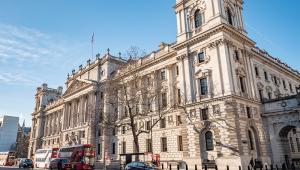It might be convenient to view public spending as merely a huge drain on national resources. But all those who are so intent on slashing public spending to the barest bone should pause for thought – starting with Wednesday’s Budget. Wielding public procurement power of some £175bn more effectively could, in fact, produce huge benefits.
Latest Association for Public Service Excellence research shows how councils can use their spending power to make local economies more resilient, communities more sustainable and minimise environmental impacts.
More Bang for the Public Buck: A guide to using procurement to achieve community benefits is the latest in a series of publications produced as part of a research partnership between APSE and the Centre for Local Economic Strategies, which explores the value public employment and spending brings to local economies.
Our previous analysis of the ‘local economic footprint’ used an economic multiplier model to demonstrate that council expenditure on direct employment, effective procurement and local supply chains can generate £1.64 in the local economy for every £1 of public money. And if councils considered how to produce ‘community benefits’ – including jobs, training and local business opportunities – through their procurement processes, APSE believes that figure could rise to £2.
Building strong relationships with local suppliers, advertising locally through a procurement portal, ‘contract unbundling’ to enable smaller suppliers to compete and making procurement processes more flexible – as well as including specific ‘community benefits’ clauses in contract evaluation – are all practical measures that can be taken. The research shows how a positive approach has delivered tangible results in case study authorities, such as Staffordshire, where a total of 36% of procurement spend is now within the local area.
Attitude is more important than process however. Councils need an innovative ‘can do’ culture. South Gloucestershire Council, for example, restructured the way in which it engages with supply chains and considers community benefits as well as cost and quality in tender criteria.
UK and EU law are often cited as barriers, but our case studies show how councils are that are less risk averse are able to boost employment, skills and training and small business and the third sector locally while remaining within the law. The guide includes a checklist to help formulate a strategic approach to delivering community benefits from public spending.
The most senior managers, councillors and heads of department as well as those responsible for procurement per se all have to do their bit to embed consideration of wider economic, social and environmental value into all contracts that are being let if genuine value for the public pound is to be maximised. And the national political mind-set needs to grasp that public spending is not simply the bottomless pit it is all too commonly and conveniently perceived to be – but can actually mean doubling the return on investment.
Mark Bramah is assistant chief executive at the Association for Public Service Excellence. Contact Mark Bramah at APSE on tel: 0161 772 1810 or email: [email protected]. Copies of More Bang for the Public Buck: A guide to using procurement to achieve community benefits are available at £20.00 for APSE member authorities and £40 for non-members. Email: [email protected]










